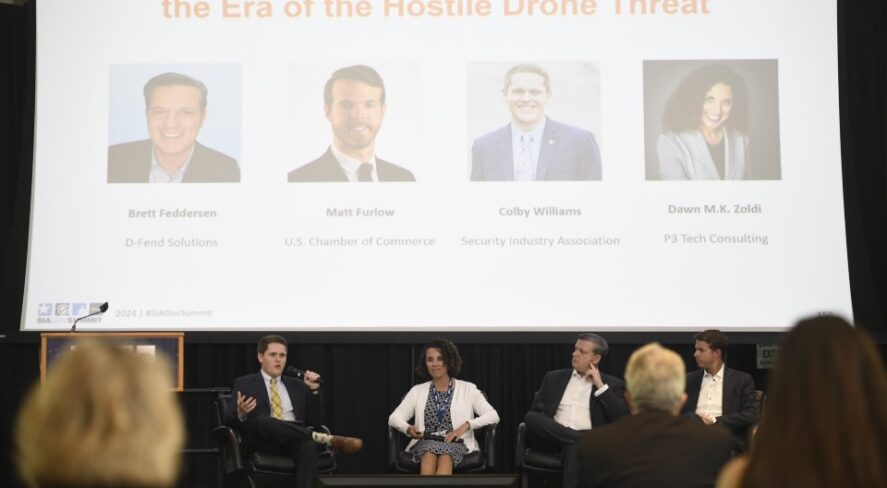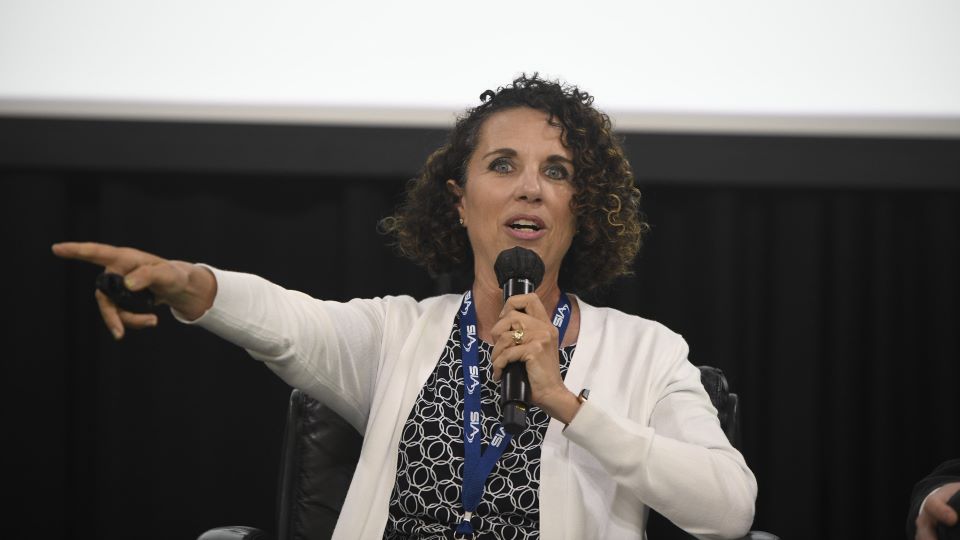SIA GovSummit Sheds Light on the Complexities of Addressing Hostile Drone Threats

Experts from military, homeland security and emerging tech law and policy examined the critical need for technologies to address challenges but also protect our drone-powered society.
While uncrewed aircraft systems (UAS) offer tremendous benefits, they also pose security risks across various sectors, including military, homeland security, critical infrastructure, law enforcement, borders, VIP protection and maritime operations. Addressing these security risks while safeguarding our society was one of the key challenges explored at the 2024 SIA GovSummit, and these challenges are a constant theme within the Security Industry Association’s Counter-UAS Working Group.
Video: Why We Need Legislative Changes to Help Prevent Domestic Drone Attacks
Detection and mitigation technologies rooted in military strategies may prove inadequate in sensitive civilian environments, leading to disruptions and potential collateral damage, and counter-UAS measures in sensitive environments should aim to achieve fast and accurate detection, safety and continuity. This presentation delved into the complexities of countering drone threats while exploring the counter-UAS legislative landscape and measures that cater to sectors’ requirements while ensuring operational flexibility and continuity.

“All one has to do is look at what is happening in the Russia-Ukraine war to see that small drones, when unchecked, can have big impacts,” said Dawn M.K. Zoldi, a licensed attorney with 28 years of combined active-duty military and federal civil service to the U.S. Air Force and CEO and founder of P3 Tech Consulting. “The risks from careless, clueless, criminal and combatant drone operators are real and, in some cases, occur daily right here in the United States.”
Zoldi highlighted that Congress has historically passed laws after crises or disasters (for example, the creation of the U.S. Department of Homeland Security happened after 9/11 and the reorganization of the Federal Emergency Management Agency occurred after Hurricane Katrina) and that the lack of updated legislation is hampering federal agencies’ ability to adequately protect our skies, people and facilities from drones, with the authority to detect, identify, track and mitigate credible domestic drone threats not sufficiently granted in current laws. Zoldi and the other panelists emphasized that it is important to act and make appropriate safety adjustments before a horrific drone-related incident takes place.
“We need action on a few things right now,” said Zoldi. “First, we need a robust [Federal Aviation Administration] Reauthorization Act that maintains Section 383 authorities and demands movement on Section 2209. Second, our federal agencies need their counter-UAS authorities extended indefinitely. Third, our first responders and those in charge of our critical infrastructure need to be able to detect rogue drones, at a minimum. Ideally, they could take appropriate action, using safe and approved technologies, with the right processes in place, should they encounter a credible drone threat.”
The session highlighted some of the emerging technologies available to support first responders, critical infrastructure defenders and the federal government without disrupting the airspace – including nonjamming, nonkinetic radio frequency cyber takeover counter-UAS systems that can confront rogue drones without disrupting communications or operations or risking collateral damage.

Brett Feddersen, vice president of strategy and government affairs at D-Fend Solutions, discussed how D-Fend’s system “passively senses radio frequency of drones … [allowing] you to see where the drone is, where the pilot is, in real time, and where it took off from, and allows security and law enforcement to intercept the individuals flying.”
“The innovative methods in [this counter-UAS] technology can complement other new technologies such as artificial intelligence and machine learning techniques,” said Zoldi. “Varied technologies integrated together for layered defense from top defense prime contractors.”
The panelists argued for more federal counter-UAS coordination across federal agencies and holistic action across all law and regulations that block counter-UAS technology, as well as counter-UAS authority and funding for state, local, tribal and territorial first responders and critical infrastructure.

Matt Furlow, senior director and counsel for the U.S. Chamber of Commerce, discussed the legal and legislative landscape when it comes to counter-UAS, pointing out that “you can’t fly drones in many places,” such as the U.S. Capitol and sports stadiums during games, “but those no-fly zones are only as effective as the counterdrone regulations and mechanisms in place.”
“There [are] not enough federal personnel to be deployed across the country to protect every site that’s at risk,” said Furlow. “That’s why we’re advocating for expanded counterdrone authorities.”
Looking ahead, panelists discussed where they see the conversation around counter-UAS five years from now.
“Hopefully we will be talking about all the successes and all the technologies in place,” said Zoldi. “Otherwise, we’ll have a different conversation about the big incident that will have happened. This is something that needs to be addressed now. We can’t keep waiting on the battlefield or at home.”

“It’s not a matter of if [an incident happens] – it’s a matter of when,” said Fedderson. “Some countries have had incidents and moved legislation in place faster than we are doing. We’d like to see this conversation being as big as other issues – how do we get these systems and how do we put them in place in our communities? It’s going to be an incident that happens here in the homeland [that causes us to act], because the FBI has already thwarted incidents and it’s just a matter of time before it seeps through.”
The Biden administration’s Domestic Counter-UAS National Action Plan was created to address concerns around the myriad of regulatory nuances and lack of a clear national framework for counter-UAS, and SIA has formed a Counter-UAS Working Group to actively support the work needed to accomplish the recommendations of the national action plan and further educate and give authorities options to mitigate UAS attacks. This group collaborates with external organizations and recruit industry experts aligned with this goal; tracks and monitors supportive legislation; and identifies, educates and engages legislators. Learn more about SIA’s advocacy and efforts around counter-UAS issues here.
